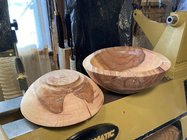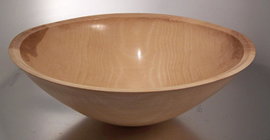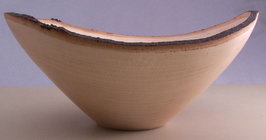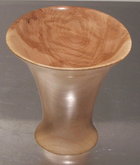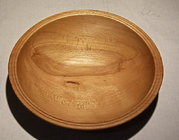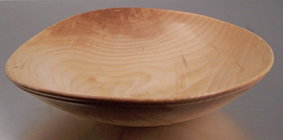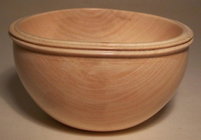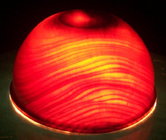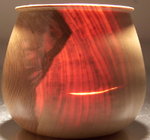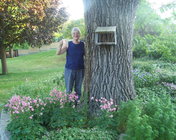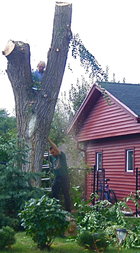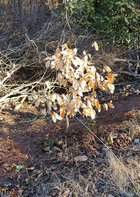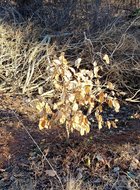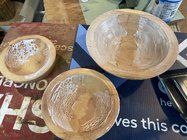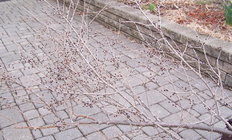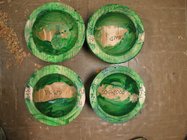I've not experienced Beech to be one of those woods that has a tendency to crack easily - like for example, apple, or several species of oak. However, when I began turning, I lost plenty of roughed out blanks because of small things that are easy to miss but make a big difference. For example, the rims on your bowls: the inside lip cuts inward, meaning that at the rim, your bowl is slightly thicker than the wall 1/4" down. That small thing means that there is a lot of stress on that rim when it begins losing moisture. That explains the two very wide cracks at the rim. I know many turners recommend chamfering the outside edge (aka remove that sharp edge on the outside of the rim) to help reduce that stress.
I'm guessing that if you put calipers on your blanks and ran the caliper down the wall from rim to foot, you would see a couple areas where the wall isn't uniform in thickness. I also leave the foot just a bit thinner than the rest of the blank, because of the tenon. There usually isn't as much wood movement at the bottom of the bowl - so much so that you'll run out of wall when second turning it - so making it slightly thinner takes into account the extra wood you need to leave for the tenon.
I don't know anything about Highlands End-Grain Sealer; I've always used Anchorseal, (Original, not version II). But I don't use it to coat the bowls, rather coating the ends of logs before I can process them into bowl blanks. Instead, I put the bowl blanks in paper bags, doubled if the wood is freshly cut, and check them every day. I exchange the bags every 24 hours (letting the wet ones dry out before re-using) for at least 2-3 weeks. After that they need only one bag per blank, for another 3-4 weeks, then they get moved to my bowl blank storage racks for continued drying. I write on the blanks with a sharpie the date they were rough-turned, wood species, and dimensions. The date makes it easier to determine whether the blank really is dry, and the dimensions/species are helpful if I need an exact species and size for a commission.
